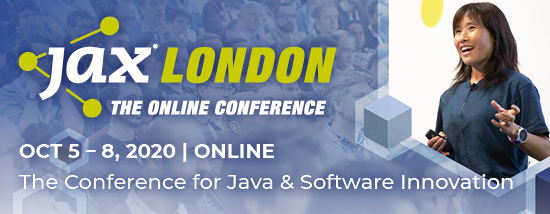A research study by The National Center for Women & Information Technology showed that “gender diversity has specific benefits in technology settings,” which could explain why tech companies have started to invest in initiatives that aim to boost the number of female applicants, recruit them in a more effective way, retain them for longer, and give them the opportunity to advance. But is it enough?
Four years ago, we launched a diversity series aimed at bringing the most inspirational and powerful women in the tech scene to your attention. Today, we’d like you to meet Marie Godfrey, SVP, Products at Flexera.
Today’s Woman in Tech: Marie Godfrey, SVP, Products at Flexera
 Marie Godfrey is SVP, Products at Flexera, a Technology Value Optimization (TVO) vendor, where she oversees product strategy, management and UX at the company and the Flexera One platform. Flexera One helps enterprises visualize their entire estate from on-premises to SaaS to cloud.
Marie Godfrey is SVP, Products at Flexera, a Technology Value Optimization (TVO) vendor, where she oversees product strategy, management and UX at the company and the Flexera One platform. Flexera One helps enterprises visualize their entire estate from on-premises to SaaS to cloud.
Marie has over 20 years in the tech industry. Most recently she was SVP of Product at Syncsort, and prior to that, Marie founded NYC-based Excellence in Product Management after 17 years in multiple roles at CA Technologies. Marie is passionate about creating value, and has driven the path for Flexera to build on the concept of TVO – making sure customers fully get a holistic view of tech investment and achieve higher levels of ROI.
When did you become interested in technology?
I am very curious by nature. If you were to consult with my parents, they would tell you that from a young age I was the one constantly asking “why” and challenging the status quo.
The journey to technology was something into which I fell. My first job post college was at AT&T, courtesy of a family friend who worked there and who wanted to make sure I had a solid place to start my career. Early on I found myself “drafted” into the more technical back-end systems management part of the company in systems quality assurance – a perfect role for someone who challenges the status quo. My first real technical project was an “all hands on deck” quality assurance spike prior to a systems upgrade. I was hooked. I loved trying to throw every creative scenario at the technology to see if I could break it or cause unintended actions. I enjoyed finding bugs, the debugging process and being able to write my own automated testing code and scripts.
I continued to find technology to be a very empowering sector in which to build a career. I have spent most of my career in commercial infrastructure software and data management and I find myself marveling at the tangible impact that technology has on the lives of our customers and their customers. So much of what happens in the world every day revolves around technology solving a problem and that is very exciting and motivating to me. It is where my “inner geek” comes out.
What obstacles did you have to overcome?
I worked my way up in technology at a time when women started to take on more leadership positions in what you would call middle management. Throughout the first half of my career, I was pretty fearless and took on anything that was thrown at me in an effort to gain experience and learn. I made mistakes, I learned many lessons and saw success.
With success, however, came more vulnerability. At times I suffered from those self-doubt thoughts that run through your head, thoughts like “Am I smart enough?” “Do I know enough?” In addition, occasionally I faced hateful rhetoric from colleagues who would suggest that I did not “look the part” or “belong.”
There was one crucial period in my career where the detractors and self-doubt became so heavy to the point where I considered walking away from the profession altogether. It was only through a solid support system and help from others that I was able to ground myself in who I was and what I was good at, get comfortable in my own skin, shut out the naysayers, prove my value, and move forward. Resiliency prevailed.
Did you receive support from your family and friends? Do you have a role model?
Absolutely. I am very blessed to be a wife to a kind and generous guy and mother to three boys. My husband and I chose role reversal when the boys were younger and he was a stay-at-home father for a period. It takes an amazing, well-grounded man to assume that sort of role in a time when it was not the norm. We had our ups and downs but we found a way to make it work. I also have a tight circle of friends and colleagues who I trust implicitly to help me navigate this career that I am so fortunate to have.
Role models are deeply personal to me. The one who stands out was a very good friend of my mother’s who I leaned on heavily when I was a very spirited and headstrong teenager. She died a few years ago but I can say without hesitation that I would not be where I am today without her. She was a supporter and challenger, especially when I was making decisions that were not in my best interest. We would explore different ways to deal with situations and I always felt as if she and I were talking “with” each other rather than her “talking to me” or “talking down to me.”
She was by far one of the strongest women I have had in my life and she was a great example of women helping women.
A day in Marie’s life
I lead the product organization at global software company Flexera, including product management and user experience. My organization has the responsibility for product vision, strategy, and execution against that strategy. My remit is to ensure that our products deliver tangible customer value and that my organization leads the alignment of internal stakeholders to plan and execute on our roadmap. I focus on technology enabling business outcomes, the total customer experience and competitive and market success for our products and their capabilities. I am a key decision-maker with respect to our priorities and where we invest our time and our people.
Wrestling with ambiguity and uncertainty, finding and making sense of patterns and turning insights into product direction constitutes a good portion of my day. Harnessing our teams’ talent to deliver compelling value is what drives me. I love taking an outside-in, “what problems are we trying to solve” approach to my work. In any given day you can find me meeting with customers, coaching people in the organization, evaluating talent for new opportunities, helping us mature in our processes, and looking at product capabilities we are conceptualizing, developing, or releasing to the market.
One thing I do daily is carve out time for getting my “must do” work done so that I can be fully engaged in whatever meetings I am scheduled to attend. Carving out time helps me plan for the unexpected which in software happens quite often.
So much of what happens in the world every day revolves around technology solving a problem and that is very exciting and motivating to me. It is where my “inner geek” comes out.
What are you most proud of in your career?
Several years ago I was asked by company executives to take a leadership role for an ailing business and turn it around. It was a huge risk and several people familiar with the business told me that it was likely “too far gone” and could not be transformed.
Well I took the job anyway. I commuted to a different part of the country almost weekly and I spent time in our engineering centers around the world, engaging with our team members to learn the technology, the issues, and meeting with countless customers. I had to make some very tough decisions with respect to people, processes, and our products. The result was that our organization was able to get the business back on track and over time we restored credibility with our customers.
It took executive sponsorship plus the entire organization’s commitment to move us in the right direction. It was far from perfect and I made my share of mistakes along the way. I learned a great deal through that experience and have been able to use those learnings in other opportunities since.
Why aren’t there more women in tech?
I would have to say that even to this day I believe women sometimes feel that they must make a choice between caring for their families and their job. There were times in my career when some people closest to me would ask me if it was all worth it and I felt unspoken pressure to step back. I am glad I did not give into that pressure but it was definitely there.
Technology can be very demanding, especially today when it literally powers everything we do, see, feel, and experience. In this “always on” world in which we live, those who work in technology companies in some ways feel compelled to be “always on” too. The need for continuous delivery of value to customers has increased and so too are the pressures on our technology workers.
Now layer the role of wife and mother on top of that, especially in the COVID-19 era. Imagine being a parent of young children this year where they are no longer in school but are now learning at home. The demands on parents of young children right now are enormous and I personally know of several women who are wondering if they need to step back from their technology careers to care for their families.
Could you name a few challenges (or obstacles) women in tech face?
All you have to do is look at the board of directors or leadership teams of technology companies to see that it remains a challenge for women to crack the C suite. We see more women in roles such as head of marketing and head of human resources but we have not yet hit our stride of enough CPOs, CTOs, CFOs and CEOs.
It is 2021 and we now have our first woman Vice President of the United States as well as a record high number of women in government. This is a wake-up call for technology. The challenge here – rather I call it an opportunity – is for companies to get moving when it comes to intentional diversity. Companies who want to attract and retain the best talent need to truly demonstrate diversity at all ranks and in all roles. It starts with intent, purpose, and a plan.
My experience of interviewing many women seeking a role in technology is this: these women are interviewing me and my company as much as we are interviewing them. Women in technology have choices and prospective employees need to see and hear evidence that a company supports women in roles at all levels and dimensions. Lack of evidence simply means that this top talent goes elsewhere.
Would our world be different if more women worked in STEM?
It would be different, yes. Successful women in top technology positions are driven by many factors. Having a mission, purpose and impact on people and culture is one of those leading factors. Women tend to consider the “whole picture” when it comes to success – it is not just about making numbers, or in the case of technology creating products and features. Rather, women tend to look at the social impacts of innovation and the impact that science has on, say, a country’s ability to feed its people more effectively and economically and to potentially use technology to address supply chain issues.
Young girls of every color, ethnicity and background need reinforcement that a career in STEM can be fulfilling and can exercise mental muscles and creativity that other careers simply cannot.
The discussion about diversity is gaining momentum. How long will it take to see results from the current debate?
As leaders in our companies (regardless of whether we are in the technology sector or another), we need to lean in more consciously and purposefully on looking for value, results, and outcomes from anywhere and from anyone. We are not where we need to be on this, period, and we have a lot of ground to cover.
I cannot predict how long this is going to take but it needs to move faster. I know everyone says this, but it starts at a young age – in our homes and in our schools. Young girls of every color, ethnicity and background need reinforcement that a career in STEM can be fulfilling and can exercise mental muscles and creativity that other careers simply cannot. We must mentor more, we must demonstrate what successful women in technology look and feel like and we must invest more time, energy, and funding in STEM for the next generation and the generation after that.
What advice (and tips) would you give to women who want a tech career?
Invest time in yourself and know who you are and what makes you unique. Ask yourself the tough questions about where you are strong, what you bring, what you need to start doing, stop doing, keep doing. Surround yourself with a few people – your “circle of trust” – who will be straight with you no matter what. Find one or two good mentors and evolve yourself, but do not try and be someone you are not.
On the technology industry itself, I would advise women to consider that it is one of facts and data. You will succeed when you bring a fact-based point of view and alternatives to the problem you are trying to solve. Be biased toward action and do not hesitate to take a seat at the table. Show up prepared and confident with a winning attitude and be open to the facts from others. Be “that” employee who delivers results and makes a positive impact. When you develop a track record of success the doors will open for you.
More Women in Tech:
- Women in Tech: Hiral Patel, Founding engineer at Diamanti
- Women in Tech: Christin Matt, Senior Game Designer
- Women in Tech: Pernille Bjørn, professor & Head of Department for Research at the Department of Computer Science, University of Copenhagen, Denmark
- Women in Tech: Julia Wiencirz, Manager of the Solution Engineering Team at Applause
- Women in Tech: Cheryl Hung, VP, Ecosystem at the Cloud Native Computing Foundation
For even more Women in Tech, click here
The post Women in Tech: “Invest time in yourself and know what makes you unique” appeared first on JAXenter.
Source : JAXenter





















